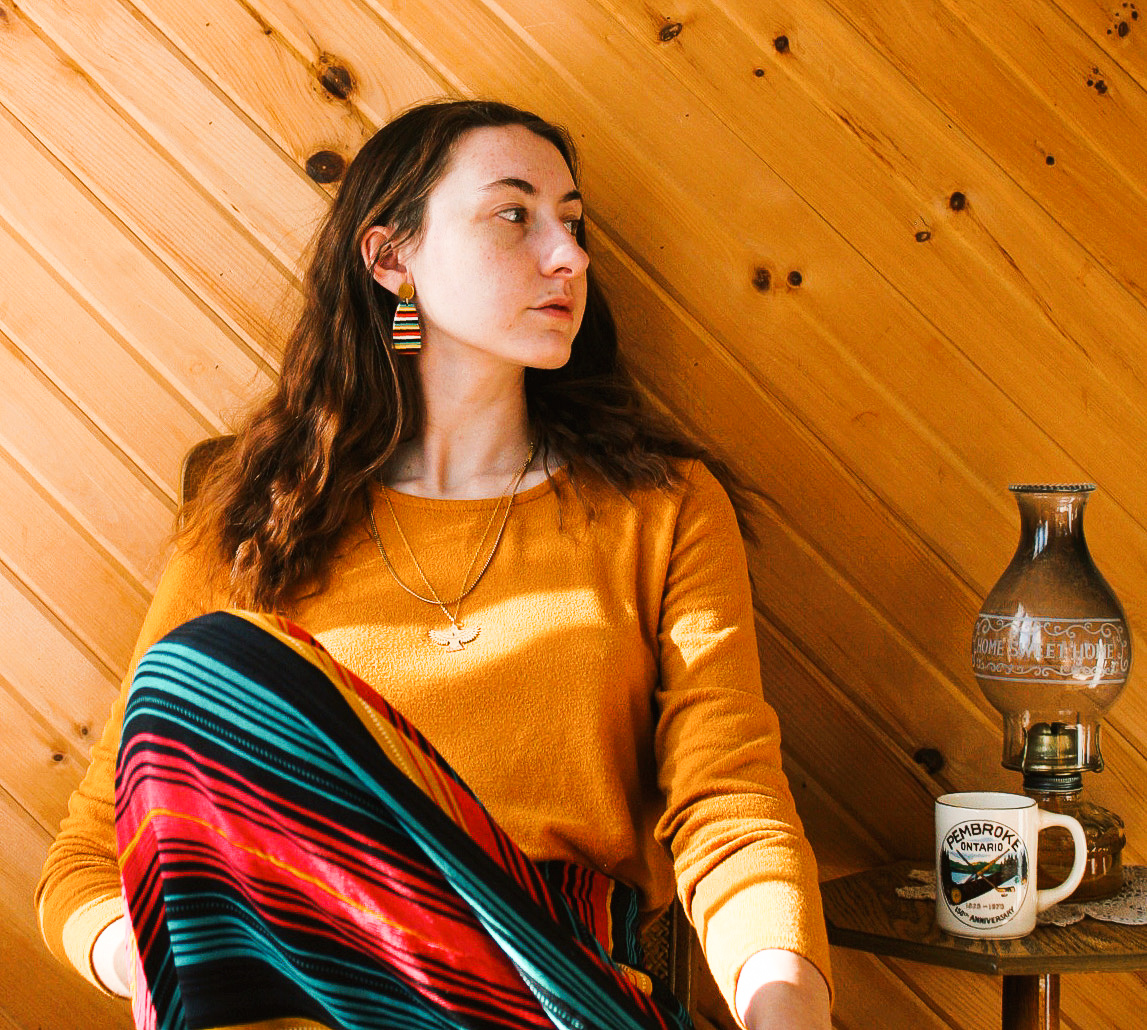Great Plains headdresses. ‘Indian Chief’ heads. Teepees. Dreamcatchers. Arrowheads.
These are the cultural symbols that Maddie Resmer, owner of Little Wolf + the Willow, often sees appropriated by non-Indigenous sellers for profit on Etsy and Instagram. Consumers adopt these images and more in search of a ‘boho’ or ‘free-spirited’ aesthetic, often ignorant of their significance in their cultures.
“Most often white folks that are coming into the art scene and coming into the jewellery making scene just cherry pick the elements of our culture that they think look nice or that…they feel [speak] to them,” Resmer said. “People want the [Indigenous] jewellery and the [Indigenous] fashion without the [Indigenous] people.”
Resmer is a Two Spirit mixed-Algonquin artist from the Algonquins of Pikwàkanagàn First Nation and the Kitigan Zibi Anishinaabe First Nation. She comes from a long line of craftspeople, canoe makers and Quill workers whose crafts were looked down upon and sometimes made illegal. She notes that this appropriation leaves out the years of teaching and cultural practices that go into pieces made by Indigenous artists.
“For a long time I felt so disconnected from that because our ability to practice our culture and to share it with others was so looked down upon, and in some cases illegal for a very long time… It’s really frustrating because all my beadwork, everything, is done the way that I was taught,” she said.
It may be tempting for consumers to wash their hands of Indigenous jewelry or fashion in an attempt to avoid the potential for cultural appropriation entirely. This approach, Resmer warns, is detrimental to Indigenous communities. She recommends that consumers do their research to understand the meaning behind cultural symbols, whether it’s okay to wear them and from whom to purchase these pieces.
“So if you were to say, ‘I keep seeing squash blossom necklaces on Instagram,’ look it up. Look up the stories behind it and look up why this piece is so integral to these people. Is it okay for me to be wearing this?” Resmer said.
If the answer is yes (as long as it’s purchased from an Indigenous artist), the next step is to find someone to purchase it from. Indigenous artists often include their nation and, if they follow a clan system, their clan on their profiles.
Resmer also notes that Indigenous artists generally appreciate when consumers reach out to them to ask if it’s appropriate to buy and wear their pieces.
“It’s never a bothersome thing. It’s always like, ‘thank you for taking the time to reach out to me and to ask me these questions’,” she said.
This research is especially important for consumers because they also need to know about the piece that they purchased from Indigenous business owners without trivializing the culture. Once consumers have that knowledge, they should take the time to call out business owners who are actively appropriating Indigenous cultural heritage to take that labour off of Indigenous people. Indigenous History Month this month is also a great time to continue to learn.
“You should always be feeling good about supporting Indigenous artists because when you do, you’re supporting their community and you’re supporting the stories and traditions that go along with this piece of art,” Resmer said.




Leave a Reply